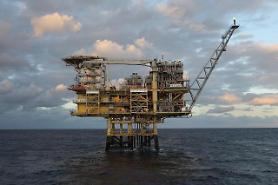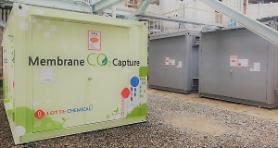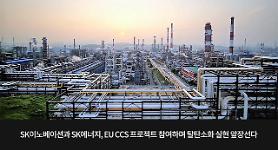
[Courtesy of SK E&S]
SEOUL -- A state research body tied up with SK E&S, an energy company affiliated with South Korea's third-largest conglomerate, SK Group, to develop, demonstrate and commercialize carbon capture technologies that are optimized for hydrogen production and power generation using natural gas.
The Korea Institute of Energy Research (KIER) has tried to develop various carbon capture technologies such as KIERSOL which is a combination of a liquid sorbent that can capture carbon dioxide selectively. With KIERSOL technology, more than 90 percent of carbon dioxide can be recovered from CO2 emission facilities. KIER researchers have founded a startup for commercialization.
SK E&S said it would actively support research and the commercialization of COS capture technologies. "SK E&S will continue to make bold investments and efforts to substantially contribute to carbon neutrality in the energy sector and the greenhouse gas reduction of our nation," said CEO Choo Hyeong-wook.
In partnership with KIER and its startup, SK E&S will push for the localization of carbon capture and storage (CCS), which is the process of capturing waste CO2, transporting it to a storage site and depositing it where it will not enter the atmosphere. CCS increases the eco-friendly nature of LNG power generation.
In March, SK E&S disclosed an injection of $1.4 billion to develop gas fields in northern Australia and bring in 1.3 million tons of liquefied natural gas per year for 20 years from 2025. It is part of a broad group-wide project to promote hydrogen as a new growth engine. SK E&S would use natural gas for a hydrogen production plant to be built near Boryong, 140 kilometers (87 miles) southwest of Seoul.
The parent group has presented a goal to build a plant capable of producing 30,000 tons of liquefied hydrogen per year from 2023, with SK E&S producing 250,000 tons of blue hydrogen from 2025. Blue hydrogen is derived from natural gas with carbon capture technology while green hydrogen is produced from water using renewable power.
Copyright ⓒ Aju Press All rights reserved.



